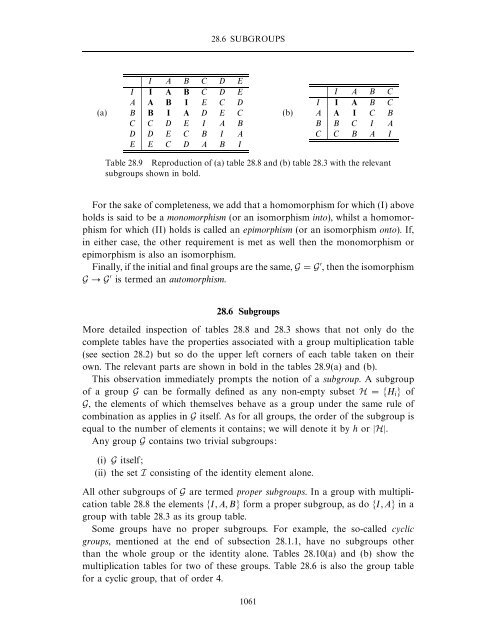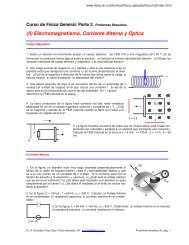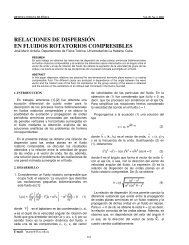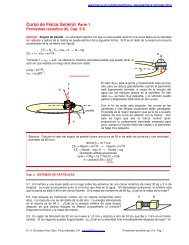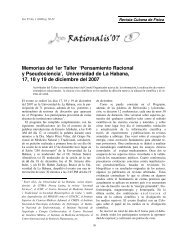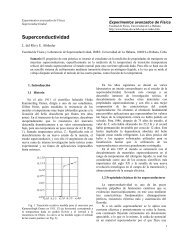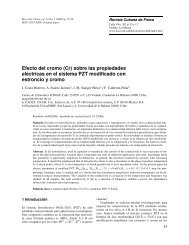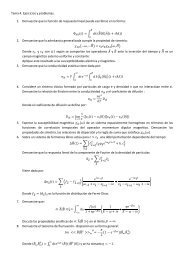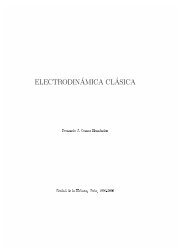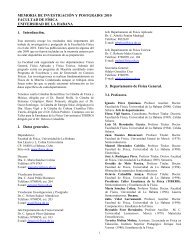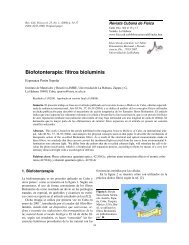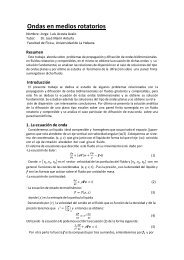Group theory
Group theory
Group theory
You also want an ePaper? Increase the reach of your titles
YUMPU automatically turns print PDFs into web optimized ePapers that Google loves.
28.6 SUBGROUPS(a)I A B C D EI I A B C D EA A B I E C DB B I A D E CC C D E I A BD D E C B I AE E C D A B I(b)I A B CI I A B CA A I C BB B C I AC C B A ITable 28.9 Reproduction of (a) table 28.8 and (b) table 28.3 with the relevantsubgroups shown in bold.For the sake of completeness, we add that a homomorphism for which (I) aboveholds is said to be a monomorphism (or an isomorphism into), whilst a homomorphismfor which (II) holds is called an epimorphism (or an isomorphism onto). If,in either case, the other requirement is met as well then the monomorphism orepimorphism is also an isomorphism.Finally, if the initial and final groups are the same, G = G , then the isomorphismG → G is termed an automorphism.28.6 SubgroupsMore detailed inspection of tables 28.8 and 28.3 shows that not only do thecomplete tables have the properties associated with a group multiplication table(see section 28.2) but so do the upper left corners of each table taken on theirown. The relevant parts are shown in bold in the tables 28.9(a) and (b).This observation immediately prompts the notion of a subgroup. A subgroupof a group G can be formally defined as any non-empty subset H = {H i } ofG, the elements of which themselves behave as a group under the same rule ofcombination as applies in G itself. As for all groups, the order of the subgroup isequal to the number of elements it contains; we will denote it by h or |H|.Any group G contains two trivial subgroups:(i) G itself;(ii) the set I consisting of the identity element alone.All other subgroups of G are termed proper subgroups. In a group with multiplicationtable 28.8 the elements {I, A, B} form a proper subgroup, as do {I, A} in agroup with table 28.3 as its group table.Some groups have no proper subgroups. For example, the so-called cyclicgroups, mentioned at the end of subsection 28.1.1, have no subgroups otherthan the whole group or the identity alone. Tables 28.10(a) and (b) show themultiplication tables for two of these groups. Table 28.6 is also the group tablefor a cyclic group, that of order 4.1061


